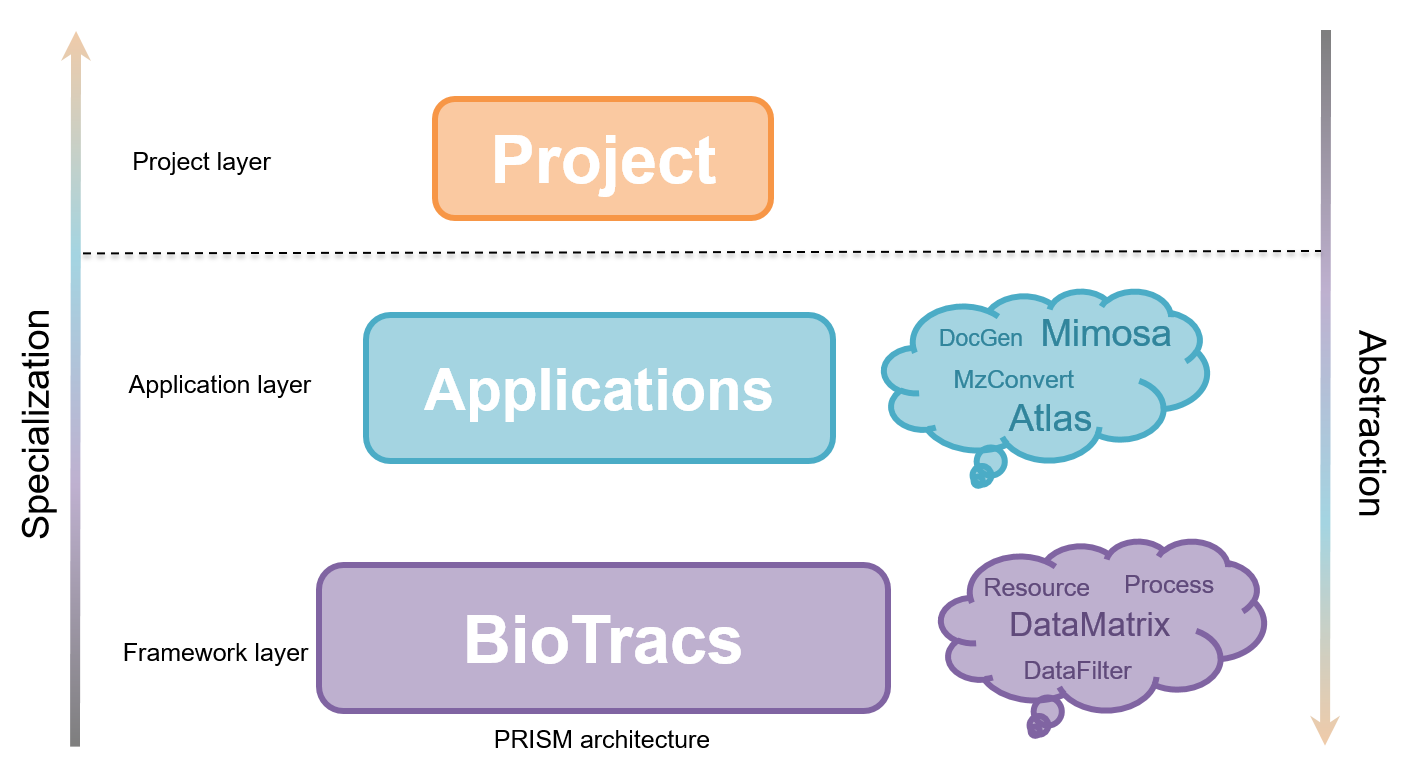BioTracs provides an hierarchical and modular environment where developers and non-expert users can model, implement, use and share their analytic workflows while ensuring traceability and transparency in their computational processes. Initiated at BIOASTER, the BioTracs project is today open to the community in order to bring this architecture to the whole bioinformatics community.
The key idea behind the BioTracs framework is to ultimately provide a community-driven analytics platform where computational processes are traceable, upgradable and easily sharable at the code, application and scientific project levels.

BioTracs framework is based on the PRISM (Process-Resource Interfacing SysteM) architecture
The PRISM architecture was designed on the basis of the well-known MVC (model-view-controller) architecture. BioTracs is therefore MVC-oriented. PRISM ambitions to provide an agnostic framework in which developers and end-users can concurrently contribute to the same applications while guaranteeing that what is implemented by the developers at the code level is what is delivered to the end-users with almost no supplementary effort.
Get sources on GitHub
BioTracs framework and applications are currently implemented in the MATLAB scientific language. Python implementations are planed. To use MATLAB sources or contribute to the project, please download source codes on GitHub repositories.
MATLAB libraries
-
biotracs-m
Core framework source -
biotracs-m-atlas
Application that provides modules for statistics and machine learning. [view] -
bioTracs-m-docgen
Generation of BioTracs documentation -
biotracs-m-lipidmatch
Application for lipid identification using tandem mass spectrometry data. This application is based on the R-tool LipidMatch. -
biotracs-m-mimosa
Mass spectrometry application for processing and analysis of metabolomics data. [view] -
biotracs-m-metadata
Application for the annotation of dataset using sample metadata tables. -
biotracs-m-mzconvert
Application for converting mass-spectrometry raw data to open file formats (mzXML, mzML, ...). Based on the well-known software ProteoWizard. -
biotracs-m-openms
Wrapper application of the open-source software OpenMS for feature extraction and peak annotation in mass-spectrometry.
Python libraries
Get standalone apps
You are not a coder and want to get experience with BioTracs applications? Download standalone applications without needing MATLAB installed.
-
BioTracs-Mimosa application
Standalone mass spectrometry application for processing and analysis of metabolomics data.
Get support
To get help and support on BioTracs applications and libraries, please contact us at josephine.abighanem[at]bioaster.org | frederic.bequet[at]bioster.org
Publications
- J. Abi-Ghanem, K Hennig, D. A. Ouattara and F. Béquet, BioTracs-MIMOSA, Poster, 12th RFMF, Clermont-Ferrand, France. [view]
- D. A. Ouattara and J. Abi-Ghanem, BioTracs-MIMOSA: A mass spectrometry application for processing and analysis of metabolomics data - Application to lipidomics, Workshop organized at the 12th RFMF, Clermont-Ferrand, France.